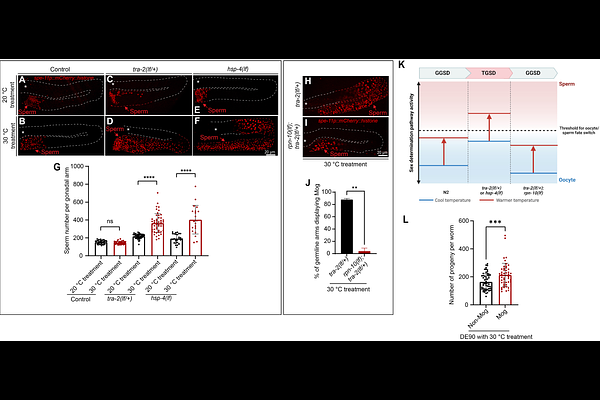Identification of BiP as a temperature sensor mediating temperature-induced germline sex reversal

Identification of BiP as a temperature sensor mediating temperature-induced germline sex reversal
Tang, H.; Shi, J.; Sheng, D.; Guo, J.; Zhou, F.; Wu, S.
AbstractBesides regulation by karyotype, sex determination is also modulated by environmental cues like temperature, but the involving temperature-transduction mechanism remains elusive. Moreover, while sex determination was traditionally seen as dictated exclusively by either karyotype or temperature, recent observations suggest these factors can co-regulate sex, posing a mechanistic mystery. Here, we discovered that certain wild-isolated and mutant C. elegans strains displayed genotypic-germline-sex-determination (GGSD) but with a temperature override. We found that ER chaperone BiP transduces temperature into germline-sex-governing signal and enables the co-existence of GGSD and temperature-dependent-germline-sex-determination (TGSD). Mechanistically, BiP availability is reduced at warmer temperatures through detecting increased ER-protein-folding burden, which promotes male-germline-fate through ERAD-mediated downregulation of the oocyte-fate driving factor, TRA-2. Remarkably, we can induce a switch between GGSD and TGSD by manipulating this newly-discovered process. Functionally, TGSD facilitates C. elegans hermaphrodites in maintaining brood size at warmer temperatures. Moreover, BiP also acts in germline-sex-determination in a dioecious nematode. Collectively, our findings identify thermosensitive BiP as a conserved temperature sensor in TGSD and provide mechanistic insights into the fascinating transition of GGSD and TGSD.